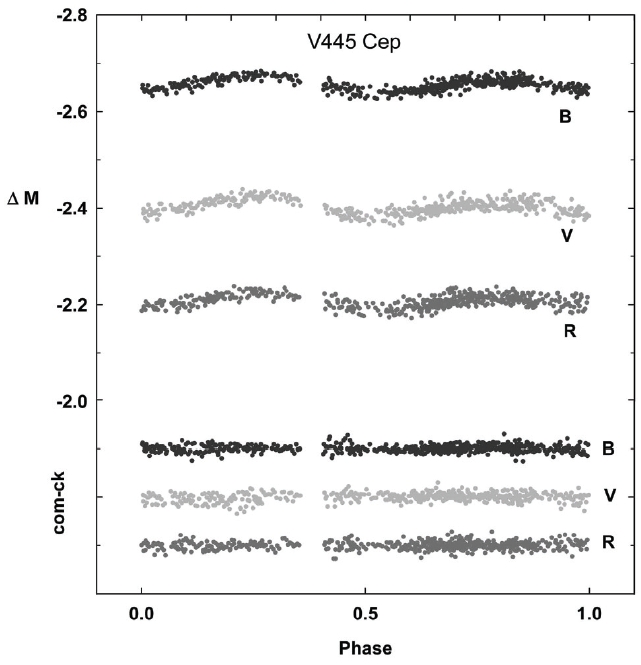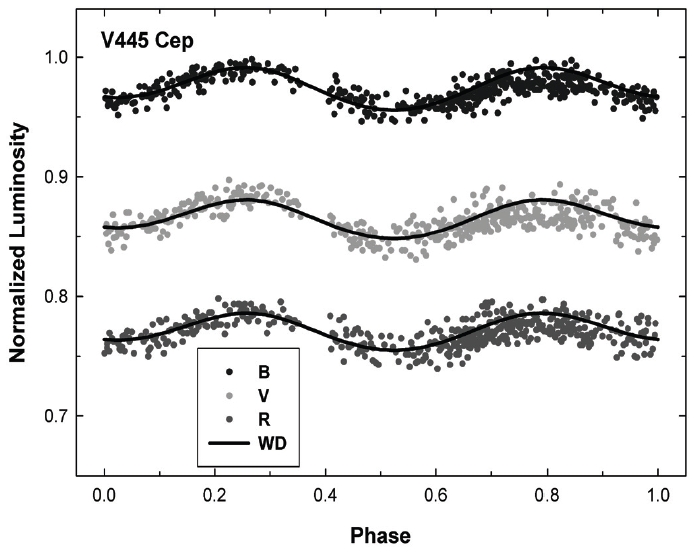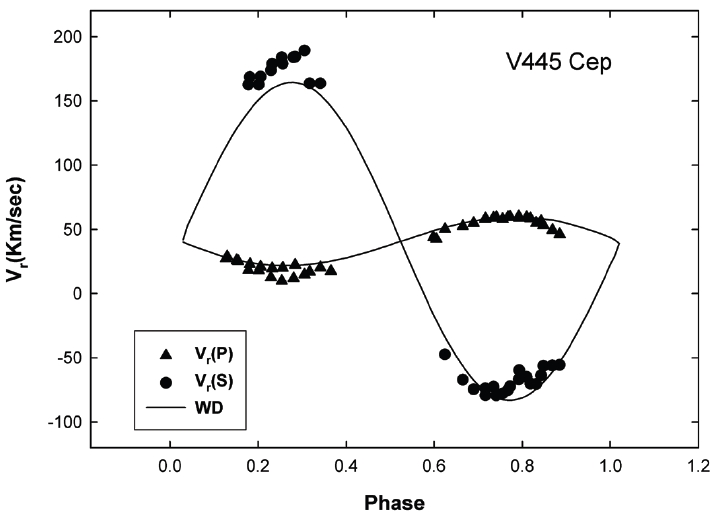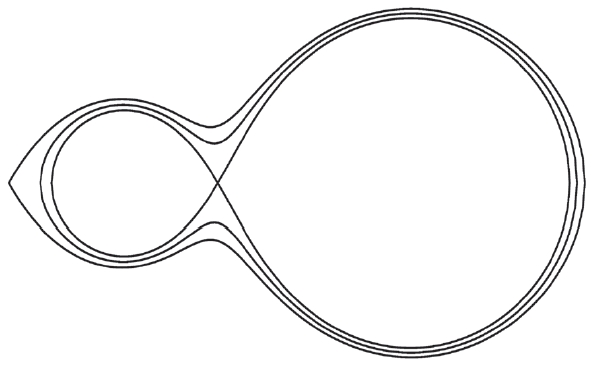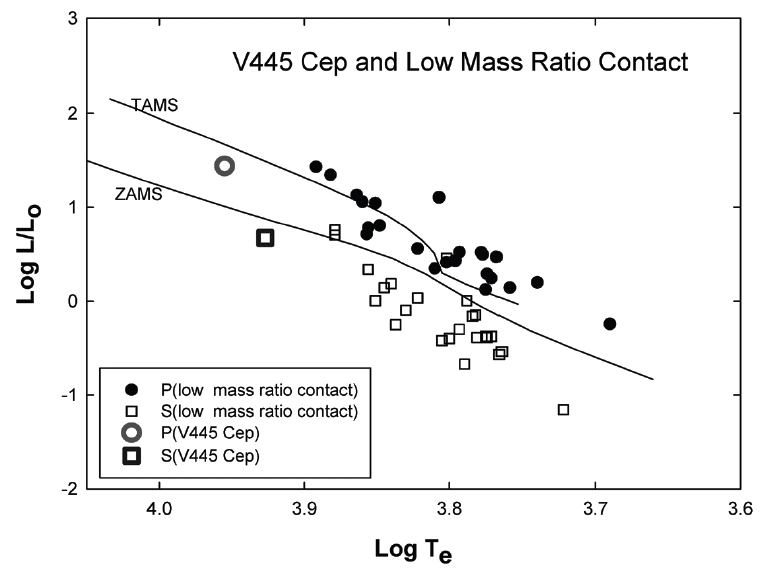



The light variation of V445 Cep (BD +71℃1109, HD 210431) was discovered by the Hipparcos mission (European Space Agency 1997). The amplitude of Hipparcos light curve is in the magnitude range of 0.03. Duerbeck (1997) and Rucinski (2002) reported that the light variation of V445 Cep may be caused by the pulsation because the color index of V445 Cep is abnormally bluer compared to the period-color relation of contact binaries. However, Pych et al. (2004) reported that V445 Cep is an eclipsing binary with very low mass ratio (q = 0.17 ± 0.01) and mass function of ([M1 + M2] sin3 i = 0.134 ± 0.006Mo) based on their radial velocity curve. They expected that it would be difficult to determine the orbital elements of V445 Cep because the amplitudes of the radial velocity curve and the light curve are very small as a contact binary. Grenier et al. (1999) classified the spectral type of V445 Cep as A2V based on their low dispersion spectroscopic observation and found the binary system velocity is Vo = 38.6 ± 9.6 km/sec. These results are confirmed by Pych et al. (2004) who determined that the spectral type of V445 Cep is A2V, and the binary system velocity is Vo = 40.69 ± 0.95 km/sec. Tycho-2 Catalogue (Hog et al. 2000) presented that the spectral type of V445 Cep is A4 based on the color index of B-V = 0.123.222
The Hipparcos light curve was made without filter and the orbital elements of the star have not been presented yet. Thus we carried out CCD photometric observations to obtain the complete
2. CCD PHOTOMETRIC OBSERVATION
[Table 1.] Physical properties of V455 Cep, comparison, and check stars.
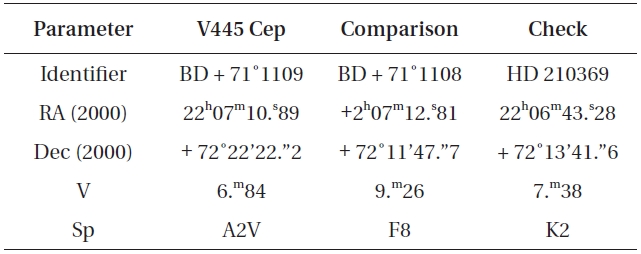
Physical properties of V455 Cep, comparison, and check stars.
[Table 2.] Observed times of minimum of V455 Cep.

Observed times of minimum of V455 Cep.
The orbital phases were calculated using the light elements of Pych et al. (2004) and the magnitude difference (Δm) were obtained using comparison star listed in Table 1. The standard deviations of the magnitude difference between the comparison stars and check stars are used as observational errors which are ±0.m007, ±0.m009, and ±0.m008 for B, V, and R, respectively. Fig. 1 shows the
3. THE ORBITAL ELEMENTS OF V445 CEP AND THE SOLUTION
[Table 3.] Orbital elements and solutions of V445 Cep.
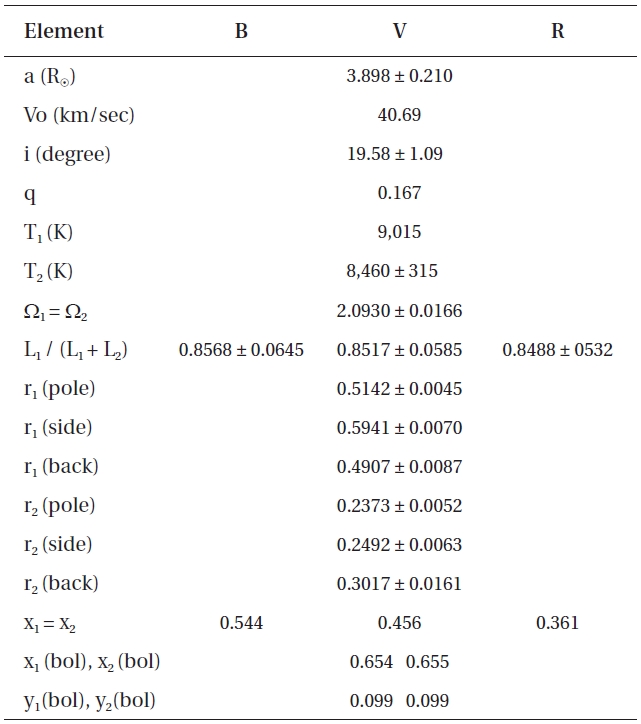
Orbital elements and solutions of V445 Cep.
As mentioned in the introduction, the complete light curve of V445 Cep as well as the orbital elements, the solution, and the absolute dimensions have not been published. Thus, we have analyzed the new
[Table 4.] Physical parameters of V455 Cep and low mass ratio contact binary stars.
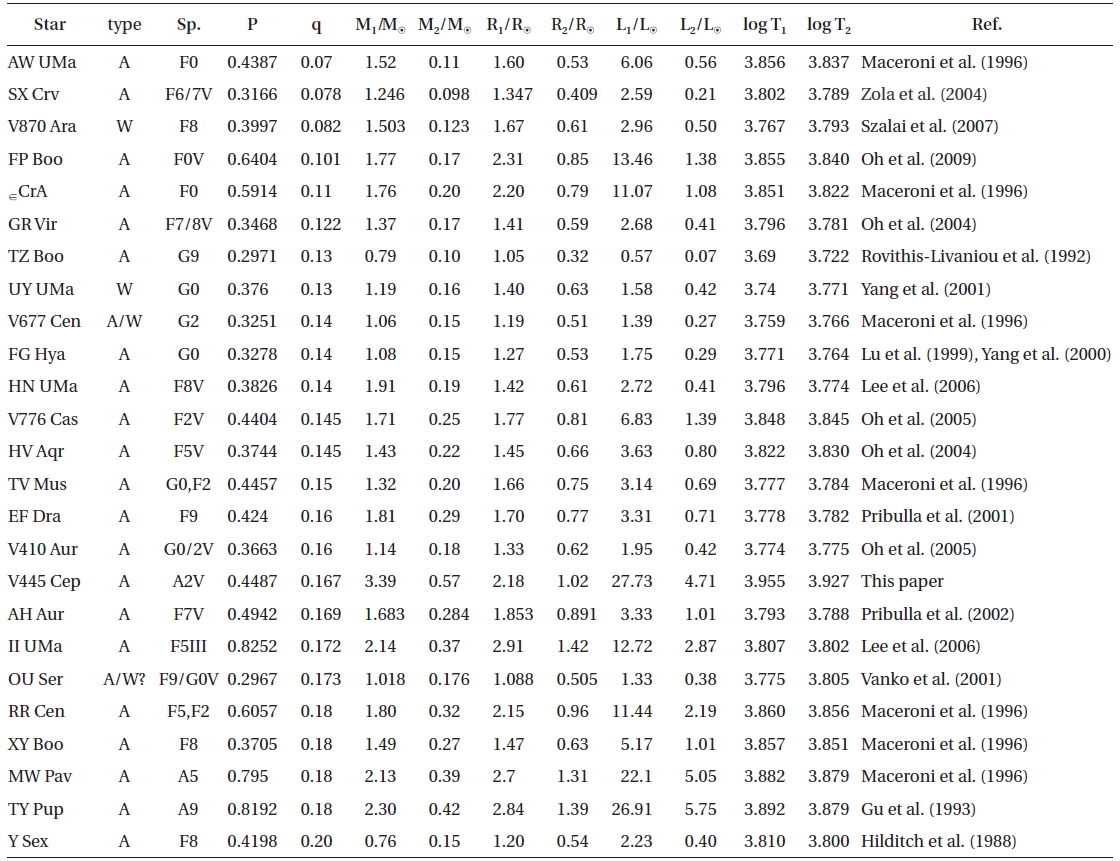
Physical parameters of V455 Cep and low mass ratio contact binary stars.
We presented the complete
We list the absolute dimensions of 24 low mass ratio contact binary systems and V445 Cep in Table 4, in order to compare the absolute dimension of V445 Cep to those of the 24 low mass ratio contract binaries (Oh et al. 2009). Except for V870 Ara and UY UMa, the 22 contract binaries belong to A-type of contract binary. The spectral types of their primary stars are F or G. Their orbital periods are less than 0.8 day, mostly being less than 0.5 day. The masses of the binary systems are mostly in the range of 1Mo to 2Mo.
V445 Cep is a A-type contact binary. The mass ratio and period of V445 Cep are similar to those of 24 low mass ratio contact binaries while spectral type and mass, and size are different from those of 24 low mass ratio contact binaries. The spectral type and mass of the primary and secondary stars of V445 Cep is A2V and 3.96Mo and 0.57Mo which are a earliest type and highest mass in the low mass ratio contact binaries.
As shown in Fig. 5, the primary stars of the low mass ratio contact binaries are located in the more evolved location than the terminal age main sequence (TAMS), while their secondary stars are located at the location in lower luminosity than the zero-age main sequence (ZAMS). The primary star and the secondary star of V445 Cep are located in higher temperature and high luminosity region when compared with the 24 low mass ratio contact binaries.
If V445 Cep is classified as a group of low mass ratio contact binary, then the characteristics, including spectral type, mass and luminosity of the group will be extended.
Our light curves show the secondary eclipse is deeper than the primary eclipse. We need to investigate whether the deeper secondary minimum is due to observational scatter or wrong light element for future work.
We would like to thank Professor Y. W. Kang for useful suggestions. This study was financially supported by Special Research Program of Chonnam National University, 2009.


